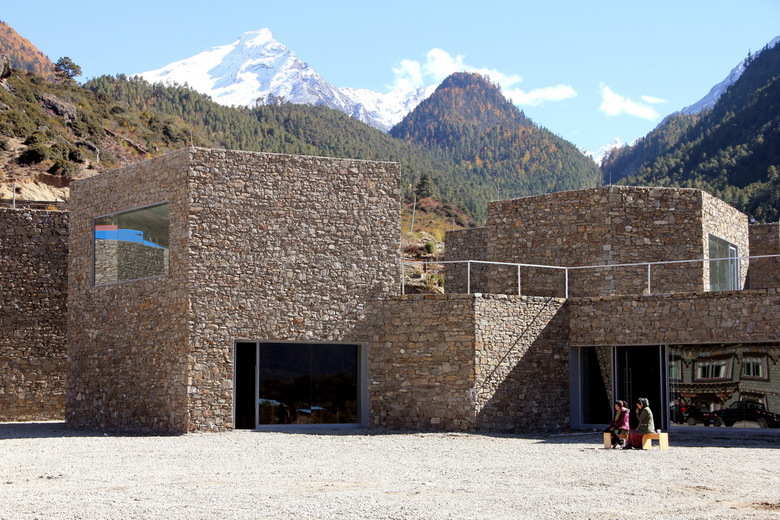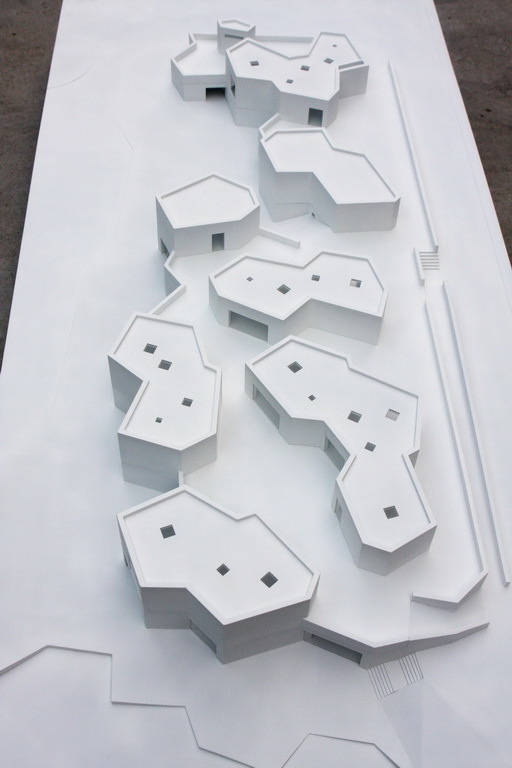Tibet Yarluntzangbu Grand Canyon Art Centre
Pai Town, Linzhi, Tibet, 中国
The Yarlong River (Yarlong Tsangpo in Tibetan, Yalu Zangbu Jiang in Chinese – the architects transcribe it as Yarluntzangbu) has its source in western Tibet and runs east through the southern part of the province. After a sharp U-turn the river crosses the border to Bangladesh and changes its name to Brahmaputra. From the Tibetan Plateau the Yarlong River enters the deepest and longest canyon in the world, the Tsangpo Grand Canyon.
The site for the Grand Canyon Art Centre, designed by standardarchitecture, is south of the Duoxiongla Snow Mountain. The river runs north of the site and to the east, in the Great Bend of the Yarlong River, Namchabarwa Peak with an altitude of 7,780 meters can be seen. One can even catch a glimpse of its opposing Gyala Peri Peak with a height of over 7,000 meters. In the spectacular setting of mountains and river standardarchitecture already realized several other buildings connected to tourism on a small and local scale.
In recent years institutions like the Tibet Heritage Fund renovated important traditional buildings in the region and some local and Chinese architects tried to adjust – with rather limited success – the features of the traditional stone and wooden architecture into new commercial projects. But so far little is known about a critical contemporary architectural development in this part of China.
standardarchitecture designed their buildings with local materials and in simple forms. In the case of the Grand Canyon Art Centre a free grid of polygonal blocks gives the basic structure for the floor plan and the spatial organization. Functions like exhibition space, office, coach dispatch center, restaurant and large toilet facilities are organized on 3,900 square meters on two levels. A large part of the ground floor is integrated into the natural slope of the site, so that only the lower part of the building shows two storeys.
The upper part consists of seven polygonal pavilions on the platform of the basement. For the natural illumination of the exhibition space, skylights are placed in the gaps between the exhibit walls and the building structure. In the planning process careful consideration was given to the views towards the natural scenery, and the windows were placed in strategic positions to frame the views. The glass panels of the windows are flush with the outer wall.
Between the pavilions of the upper floor, platforms provide space to sojourn. Local craftsmen processed the natural stone from the site for the outer skin and the outside ground floor of the building. The coherence of its appearance in the context of the neighboring buildings creates a strong connection to the landscape and at the same time a superior reflection of what contemporary architecture can achieve in the context of a still partly traditional culture.
The Grand Canyon Art Centre, together with the other buildings by standardarchitecture, shows a locally based contemporary design approach which adds a new layer to the culture in the Himalayan Mountains. Their place in the context of an alternative tourism creates familiar spaces, based on local means without the transfer of complicated technology.
Eduard Kögel
Program
Art Exhibition
Restaurant
Bus Station
Site area
9,900 sqm
Building area
3,900 sqm
- 年份
- 2011













